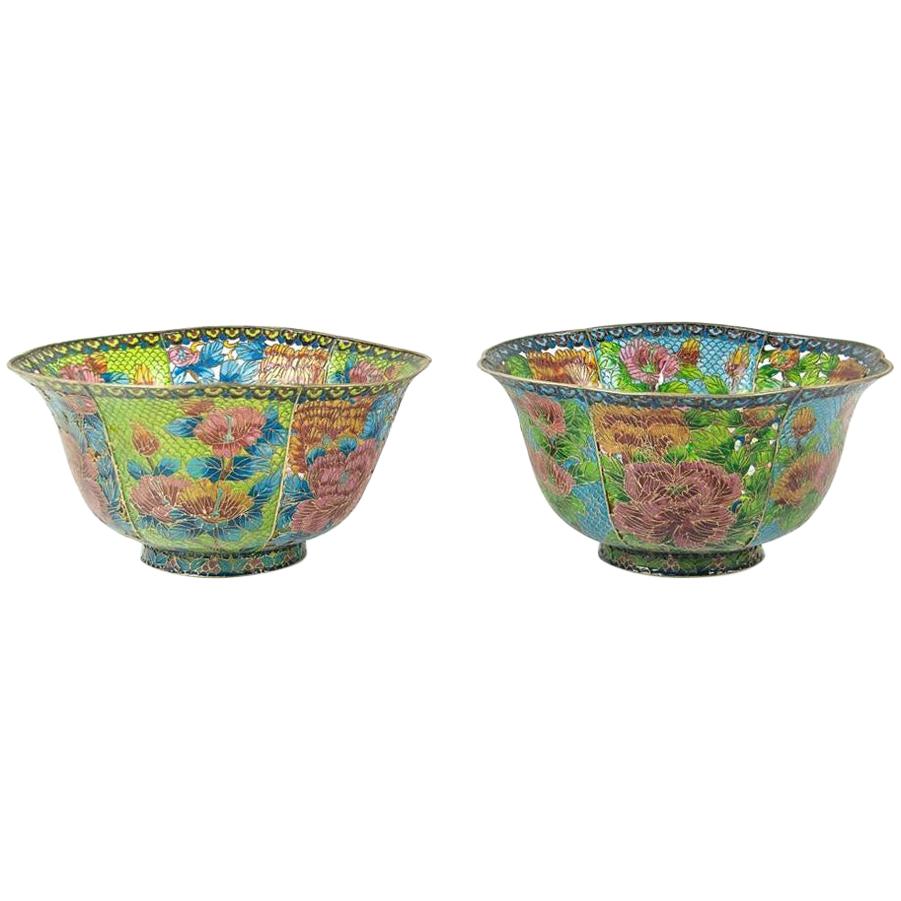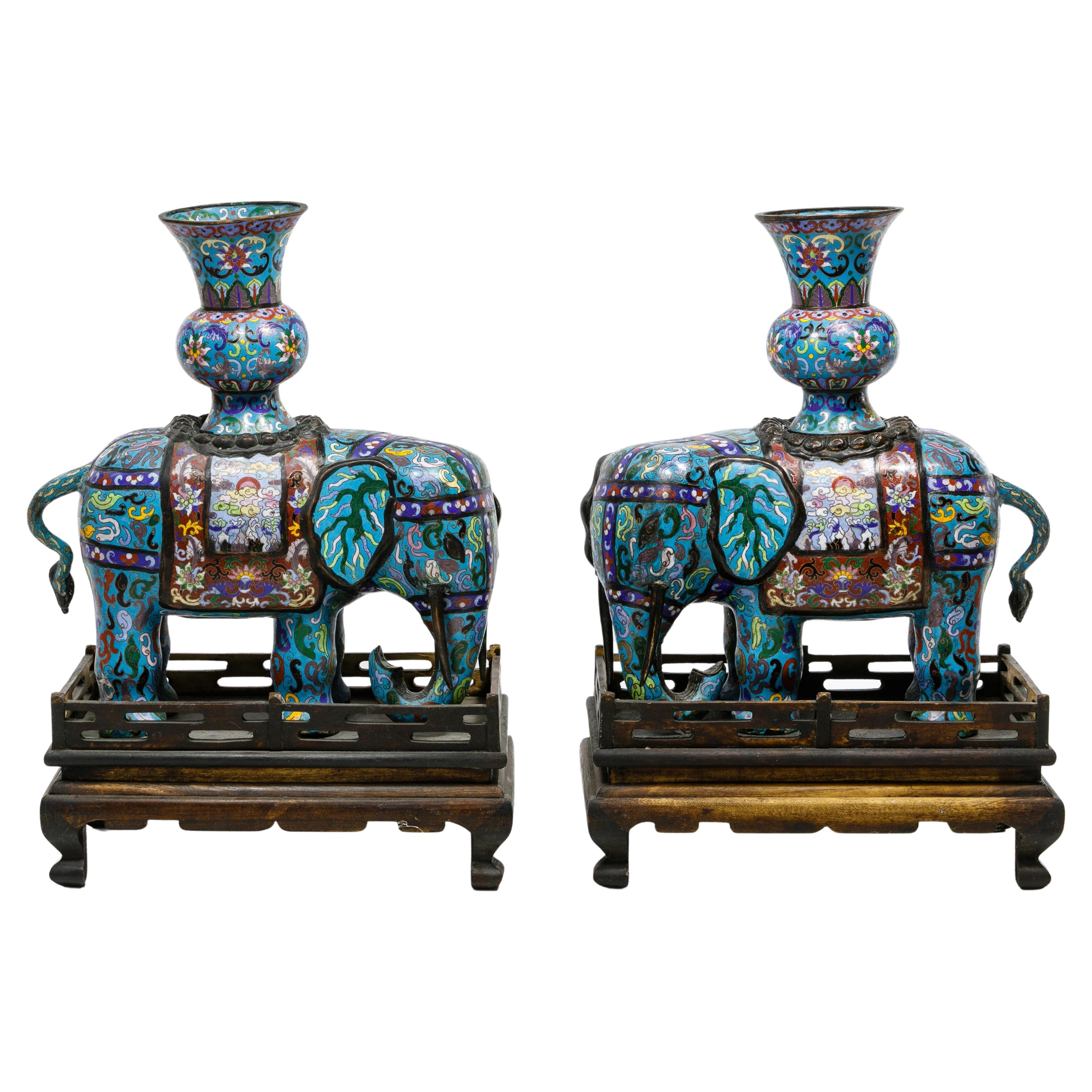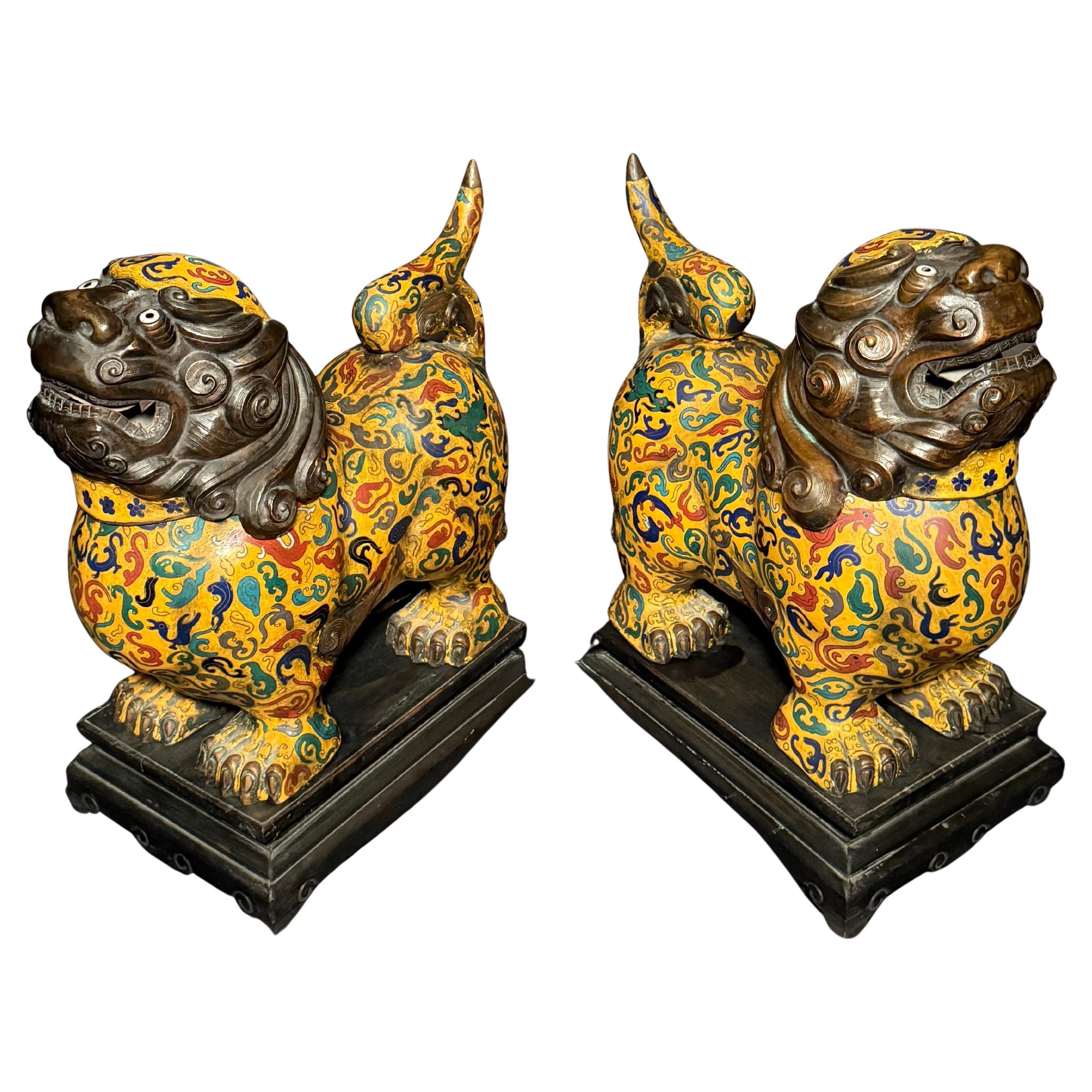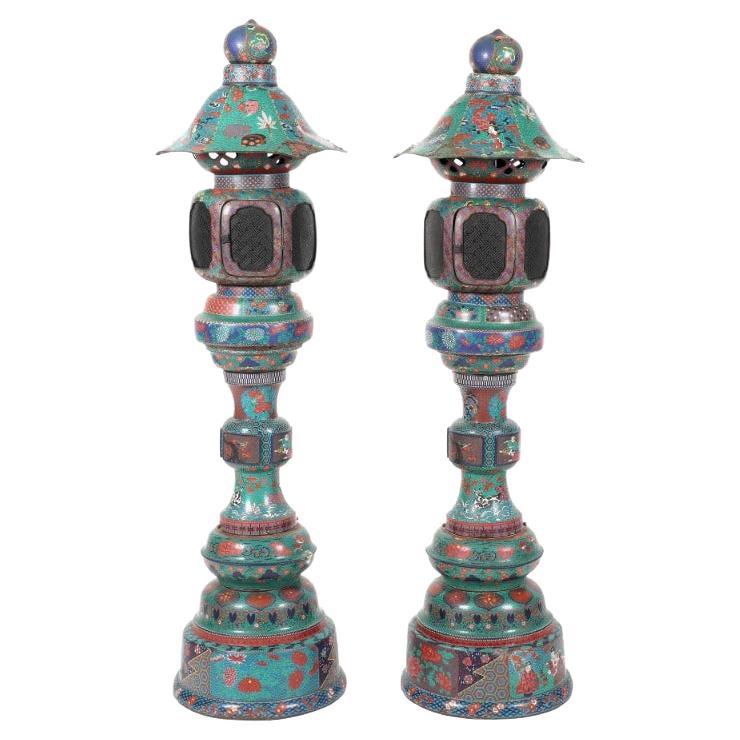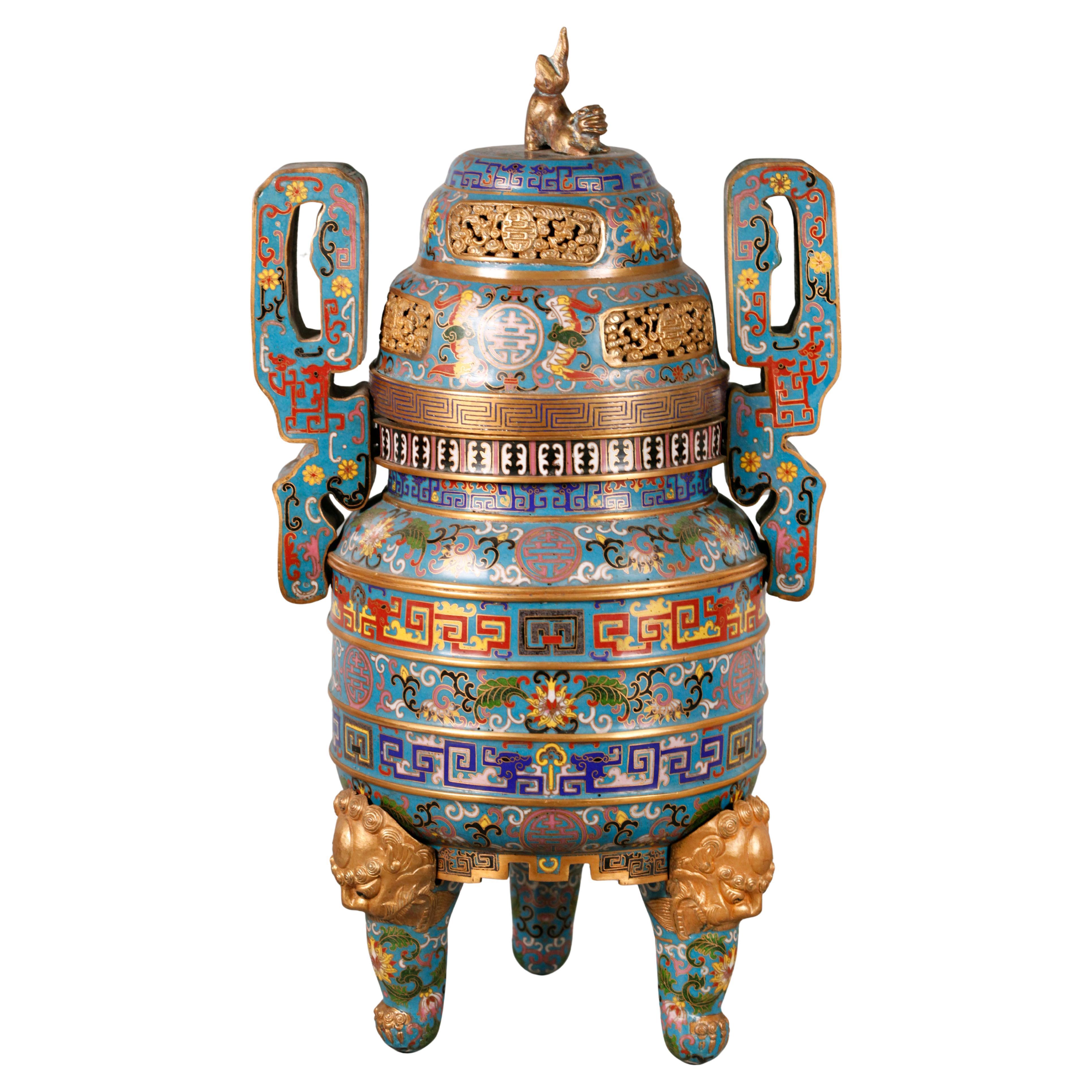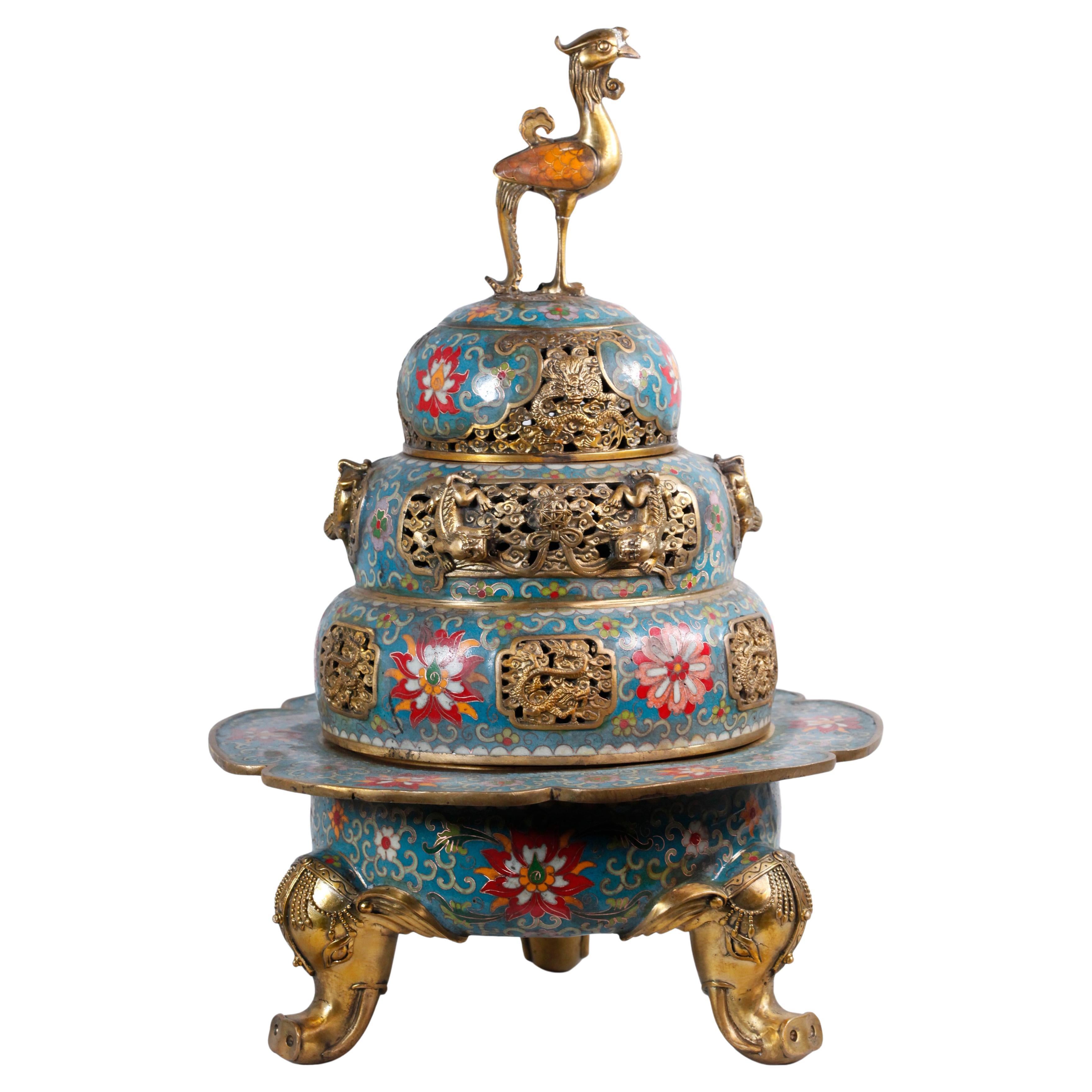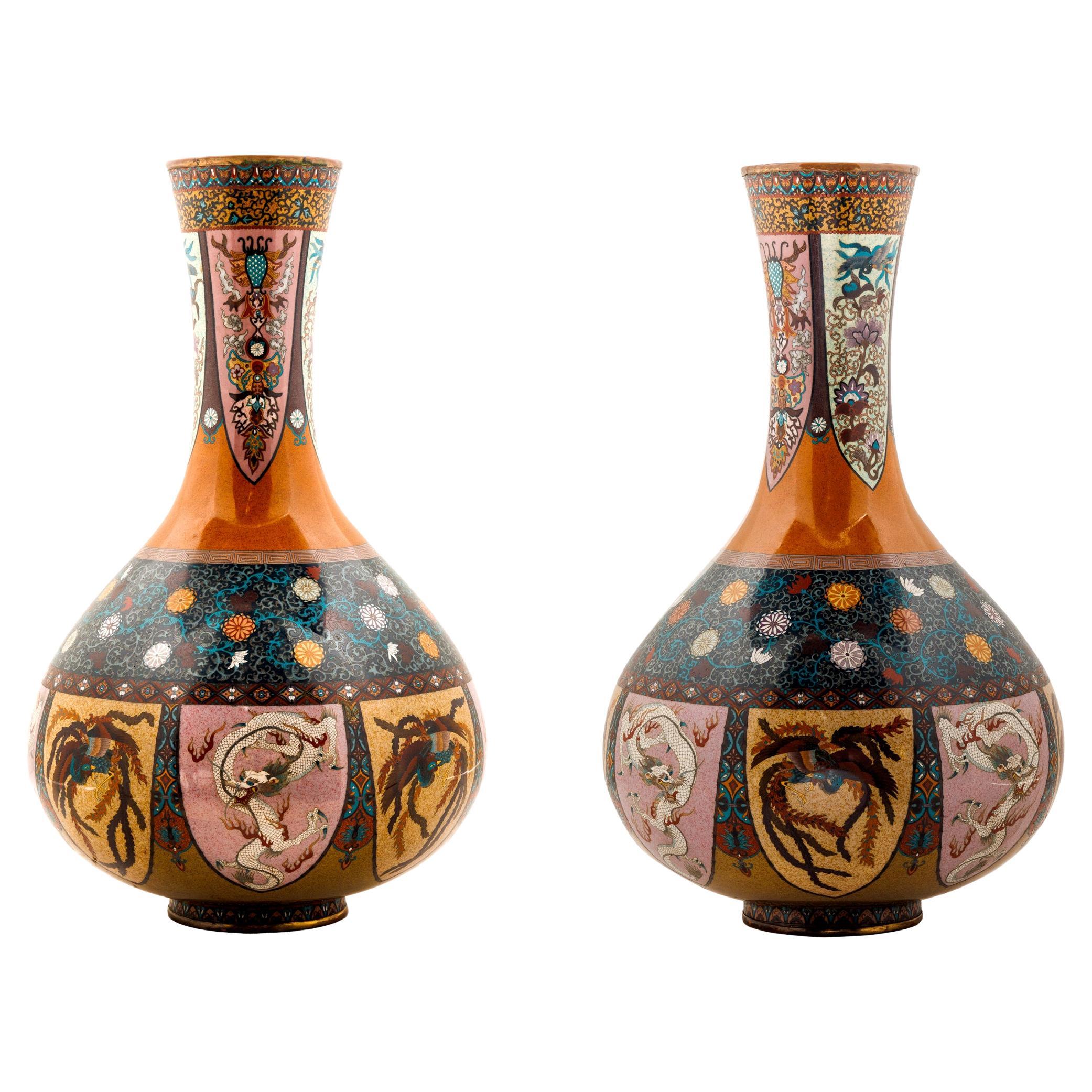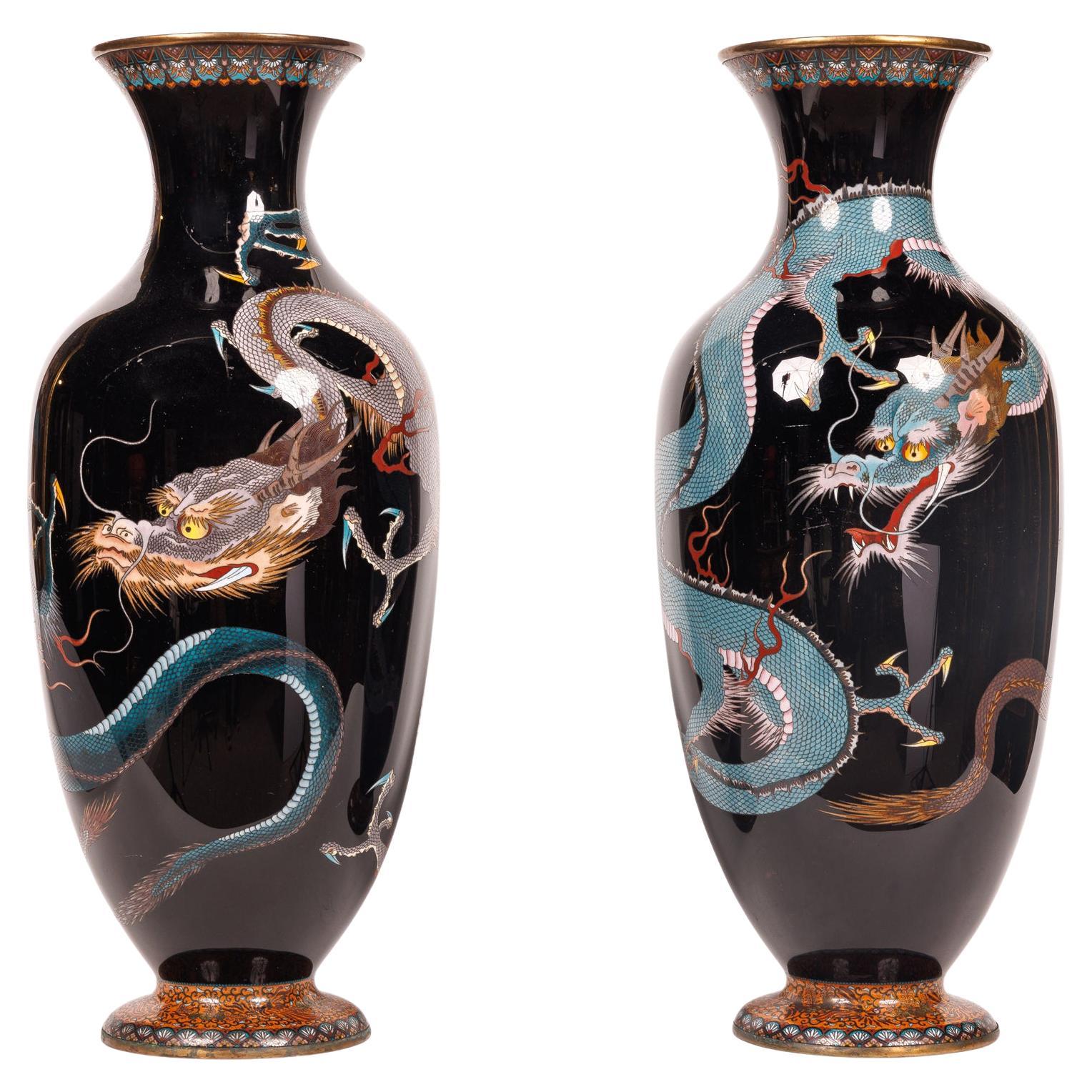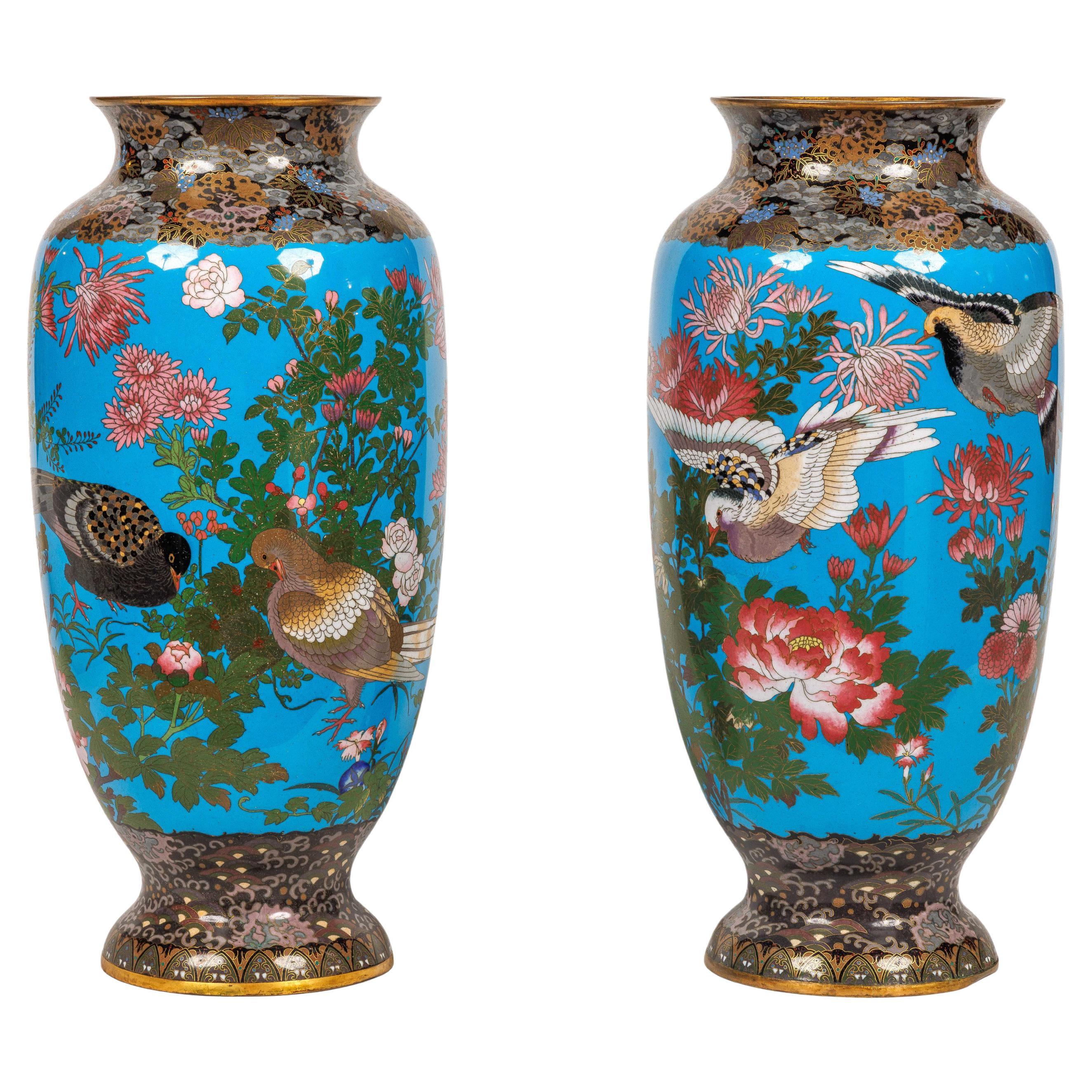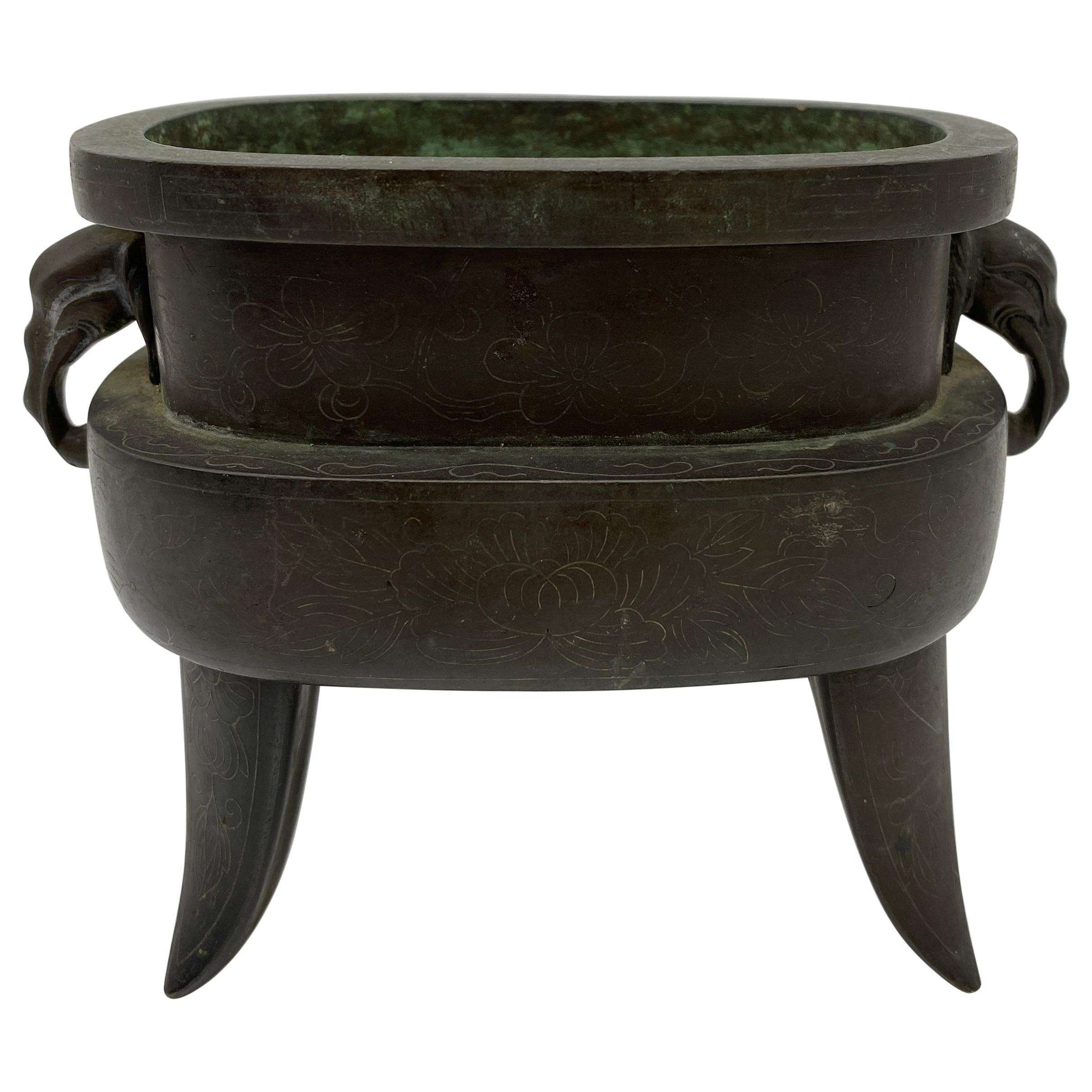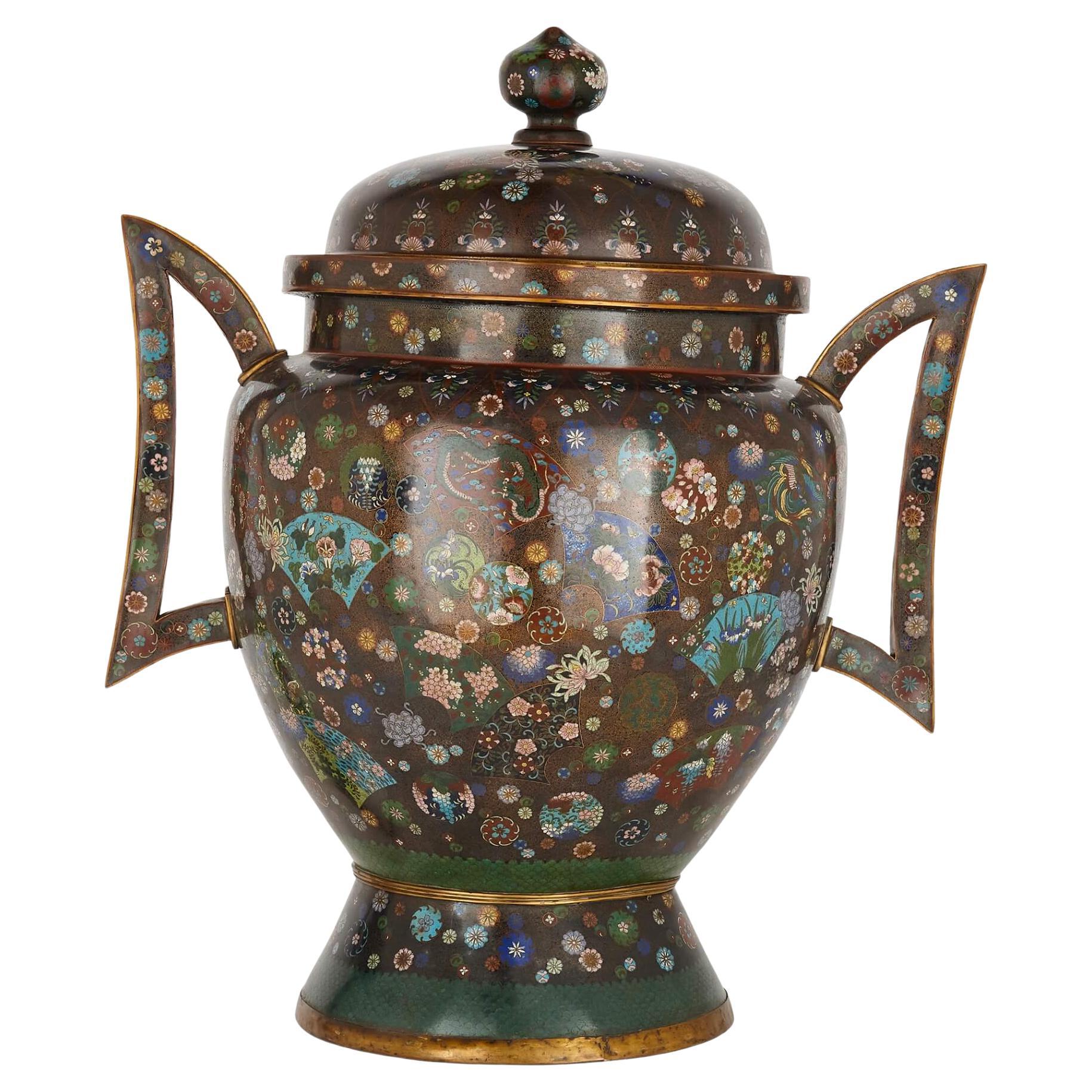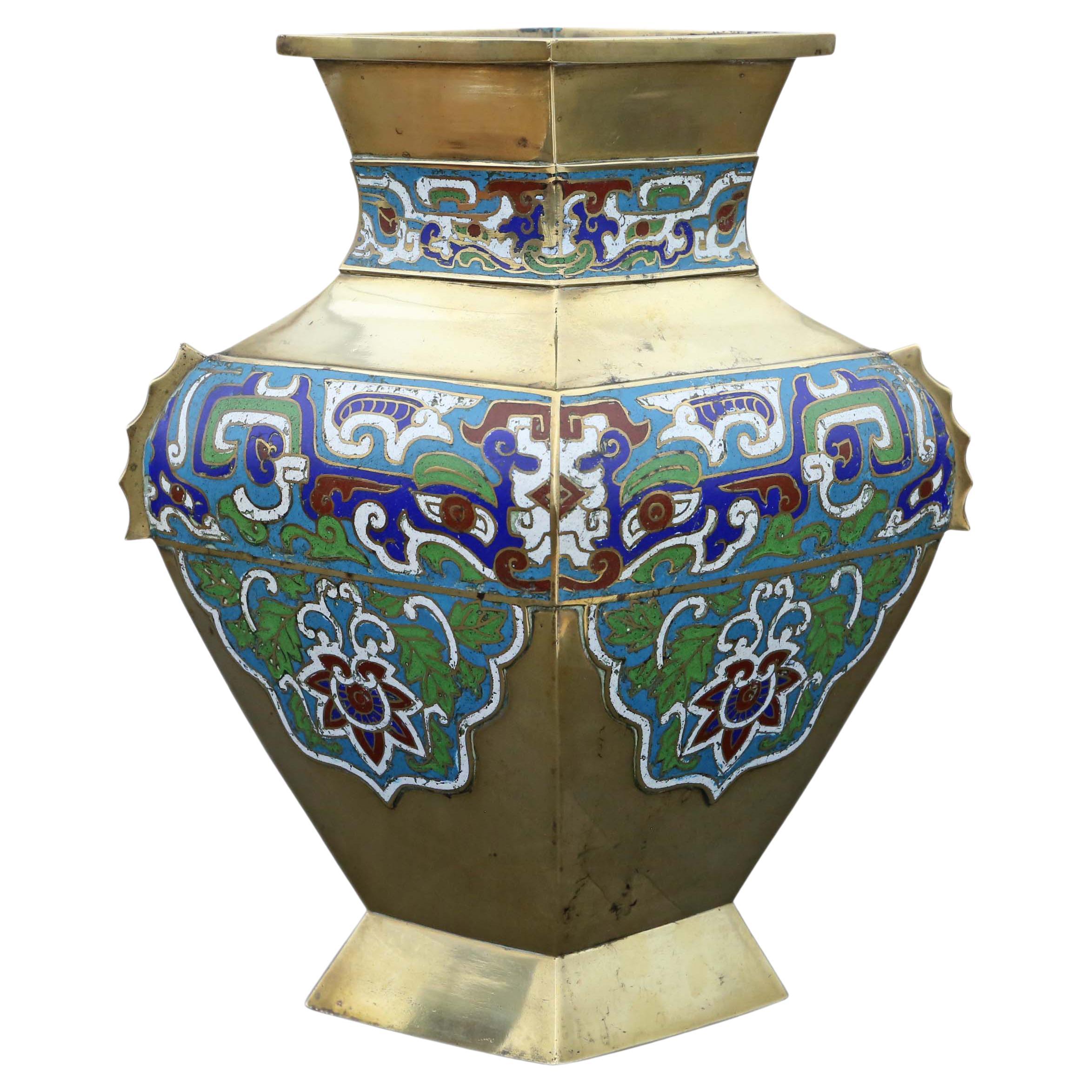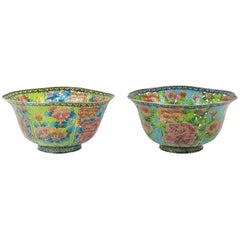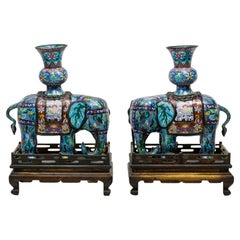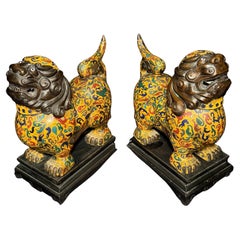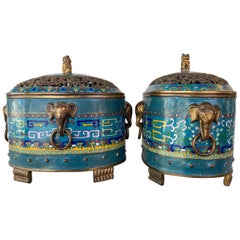
Pair of Large Chinese Cloisonné Oval Censers with Brass Elephant Handles, 1960s
View Similar Items
1 of 20
Pair of Large Chinese Cloisonné Oval Censers with Brass Elephant Handles, 1960s
About the Item
- Dimensions:Height: 11.5 in (29.21 cm)Width: 12.5 in (31.75 cm)Depth: 9.5 in (24.13 cm)
- Sold As:Set of 2
- Style:Chinese Export (In the Style Of)
- Materials and Techniques:
- Place of Origin:
- Period:
- Date of Manufacture:1960s
- Condition:Wear consistent with age and use. Very nice vintage condition. Cloisonné with no notable enamel loss or nicks. Brass with mostly light tarnish; slightly darker on a few rings. One foo dog with a bit of patina. Bottom with some old wax residue on one and spots/minor crazing on other.
- Seller Location:San Francisco, CA
- Reference Number:1stDibs: LU955019761942
Authenticity Guarantee
In the unlikely event there’s an issue with an item’s authenticity, contact us within 1 year for a full refund. DetailsMoney-Back Guarantee
If your item is not as described, is damaged in transit, or does not arrive, contact us within 7 days for a full refund. Details24-Hour Cancellation
You have a 24-hour grace period in which to reconsider your purchase, with no questions asked.Vetted Professional Sellers
Our world-class sellers must adhere to strict standards for service and quality, maintaining the integrity of our listings.Price-Match Guarantee
If you find that a seller listed the same item for a lower price elsewhere, we’ll match it.Trusted Global Delivery
Our best-in-class carrier network provides specialized shipping options worldwide, including custom delivery.You May Also Like
Pair of Large Chinese Cloisonné Plique-à-Jour Bowls
Located in Atlanta, GA
A large pair of Chinese cloisonné enamel bowl made with the technique of plique-à-jour (means "letting in daylight" in French), a challenging method similar to small scale stained windows...
Category
20th Century Chinese Chinoiserie Metalwork
Materials
Copper, Enamel
Chinese Pair of Large Cloisonné Elephants with Wood Stands
Located in Norton, MA
Large pair of standing elephants having fitted vases on their backs on wooden display stands
Measures: Height: 15 inches, Length: 14 inches, Wid...
Category
Early 20th Century Chinese Chinese Export Metalwork
Materials
Copper
Pair Of Chinese Cloisonne Enamel Foo Lion Censers
Located in Norwood, NJ
Beautiful fine pair of Chinese cloisonne enamel foo lion censers, in a standing pose. Yellow enamel ground and stylized patinated copper repousse head with enamel eyes. Standing on c...
Category
Early 20th Century Chinese Chinese Export Metalwork
Materials
Copper, Enamel
Chinese cloisonné censer
Located in New York, NY
floral and archaistic motifs on blue ground
Category
Late 20th Century Chinese Metalwork
Materials
Metal
$3,800
Chinese Cloisonné Censer
Located in New York, NY
decorated with openwork panels, and a mythical bird finial; censer is standing on three boar's head form feet
Category
Early 20th Century Chinese Metalwork
Materials
Metal, Enamel
$4,500
Large Pair of Japanese Cloisonne Enamel Lanterns Attributed to Kaji Tsunekichi
Located in New York, NY
A Large Pair of Japanese Cloisonne Enamel Lanterns Attributed to Kaji Tsunekichi, Edo Period, 19th century
Japanese cloisonne lanterns were made during the Meiji period, from the late 19th to early 20th century, and were often used as decorative lighting fixtures in temples and shrines.
Kaji Tsunekichi (1866-1916) was a Japanese cloisonné artist who was active in the late 19th and early 20th centuries. He was born in Tokyo and learned the art of cloisonné from his father, Kaji Sataro, who was also a cloisonné artist. He was renowned for his mastery of the shippo-yaki technique, which involves creating intricate designs with thin wires on a metal base before filling in the spaces with enamel.
Tsunekichi was known for his exceptional technical skills and his ability to create intricate designs with vibrant colors. His works often featured nature motifs, such as flowers, birds, and fish, which were rendered in a highly detailed and naturalistic style. He also experimented with new techniques, such as plique-à-jour, a type of cloisonné that creates a stained-glass effect.
Tsunekichi's works were highly prized during his lifetime and continue to be sought after by collectors today. He won numerous awards for his cloisonné creations, including a Gold Medal at the 1900 Exposition Universelle in Paris. His works are characterized by their fine wirework, precise enamel application, and attention to detail.
Some of Tsunekichi's most famous works include a pair of large cloisonné vases...
Category
Antique 19th Century Japanese Edo Metalwork
Materials
Copper, Enamel
Recently Viewed
View AllMore Ways To Browse
Cloisonne Incense
Large Brass Dog
Cloisonne Elephants
Cloisonne Censer
Vintage Cloisonne Ring
Brass Censer
Cloisonne Enamel Elephant
Elephant Censer
Foo Dog Incense
Foo Censer
Foo Dog Ring
Cloisonne Dog
Chinese Cloisonne Censer
Foo Dog Candle
Japanese Inlaid Bronze
Chinese Bronze Incense Burner
Chinese Incense Censer
Jade Cloisonne
